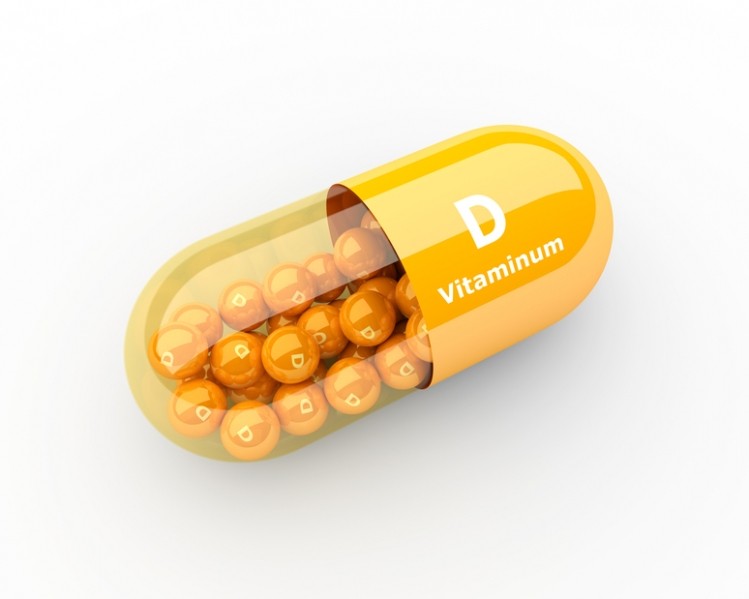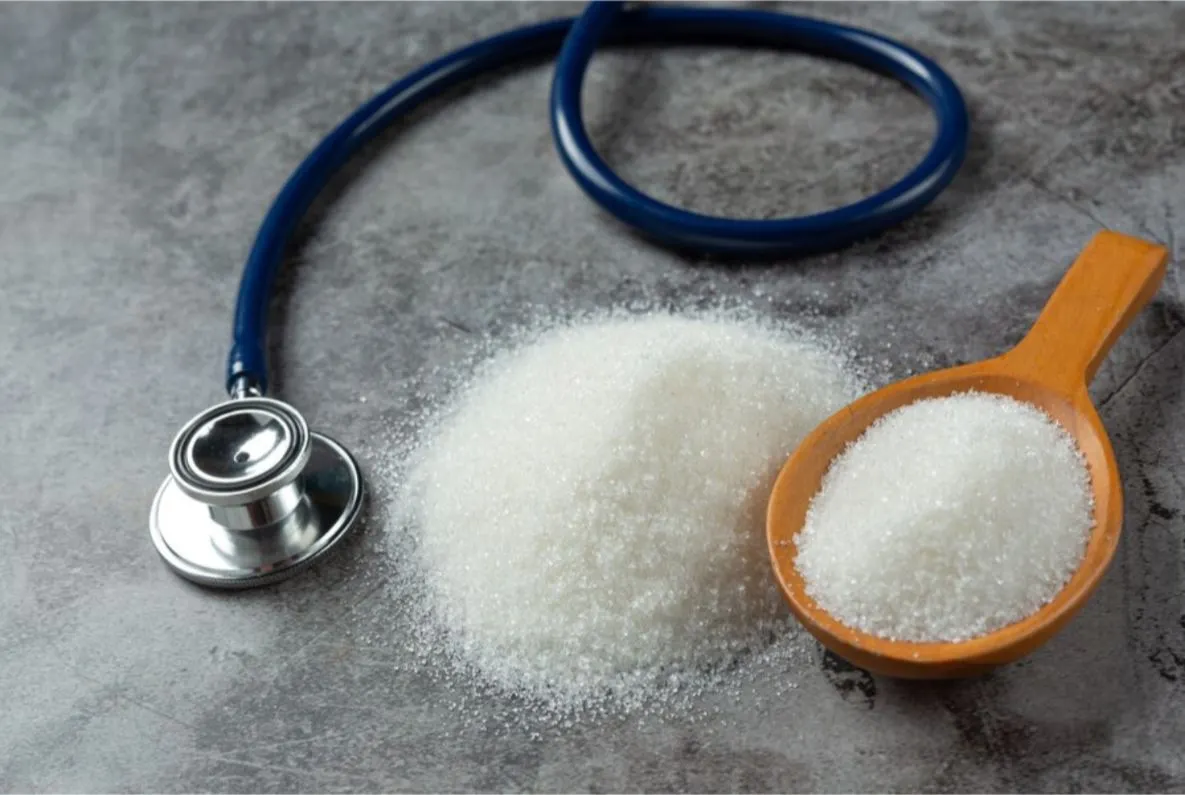Daily Dose of Sunshine: Understanding Vitamin D Intake for Adults
Vitamin D, often called the “sunshine vitamin,” plays a crucial role in bone health and immunity. But how much is enough? Experts recommend that adults aged 19-70 take 15 micrograms (mcg), or 600 international units (IU), of vitamin D daily.
While recent discussions have explored the effects of high-dose, weekly vitamin D regimens, the traditional daily approach remains the most widely recommended. This is because high doses can lead to hypercalcemia, a dangerous condition with excess calcium in the blood. Vitamin D aids calcium absorption, so exceeding recommended amounts can disrupt this balance.
On the other hand, a vitamin D deficiency can cause bone pain and muscle weakness. To avoid these complications, most experts recommend sticking to smaller daily doses, except in specific health situations where a doctor might prescribe otherwise.
Here’s the good news: you have options! You can increase your vitamin D intake through your diet or by taking supplements. Vitamin D2 and D3 are the two main supplement forms, with D3 being more effective at raising blood levels.
This article dives deeper into these topics, exploring how to get vitamin D from your diet, what to look for in a vitamin D supplement, and the science behind the recommended daily dosage.
Vitamin D Supplements: Unveiling the Dosage Mystery
While sunshine is a natural source of vitamin D, many people turn to supplements to ensure they meet their daily needs. But navigating the vast array of dosages, ranging from hundreds to thousands of IUs, can be confusing.
The Rise of High-Dose Weekly Regimens:
Recent research is exploring the potential benefits of high-dose, weekly vitamin D regimens as opposed to the traditional daily approach. For instance, a 2023 study suggests that very high weekly doses (up to 21,000 IU) might be linked to reduced ICU admissions and deaths from COVID-19 in certain populations. Similarly, a 2018 study showed that pregnant women with vitamin D3 deficiency who received a high weekly dose (50,000 IU) experienced no side effects and achieved higher blood levels compared to those taking a daily dose (1,000 IU) after 10 weeks.
Tailoring Your Dosage: It’s Not One-Size-Fits-All
While high-dose weekly regimens may hold promise in specific situations, most people needing vitamin D supplements only require a small daily dose. However, determining the optimal amount for you depends on several factors:
- Geography: Sunlight exposure varies depending on location. People living in areas with less sunlight might need a higher dose.
- Ethnicity: Skin pigmentation affects vitamin D synthesis. Individuals with darker skin tones may need slightly higher doses.
- Underlying Health: Certain medical conditions can affect vitamin D absorption or utilization, potentially requiring adjustments in dosage.
- Symptoms: The severity of vitamin D deficiency symptoms can influence the initial dosage prescribed by a doctor. For instance, someone with severe deficiency might need a larger weekly dose for a short period to replenish stores before transitioning to a maintenance daily dose.
Striking the Right Balance: Daily Vitamin D Intake for Adults
Vitamin D, the “sunshine vitamin,” plays a vital role in bone health and immunity. But how much should you aim for each day?
For adults aged 19-70, experts recommend a daily intake of 15 micrograms (mcg), which is equivalent to 600 International Units (IU). This amount ensures you get the necessary benefits of vitamin D without exceeding safe limits.
Knowing Your Limits: The Tolerable Upper Intake Level (TUL)
There’s a safety net in place when it comes to vitamin D. The Tolerable Upper Intake Level (TUL) is the highest daily dosage considered safe for most healthy adults. For vitamin D, the TUL is set at 4,000 IU. Exceeding this amount can lead to potential health risks.
While the recommended daily intake provides a good starting point for most adults, it’s important to remember that individual needs can vary.
The Silent Threat: Understanding Vitamin D Deficiency
Vitamin D, often nicknamed the “sunshine vitamin,” is crucial for maintaining strong bones and a healthy immune system. Surprisingly, a significant portion of the population struggles with vitamin D deficiency. A 2022 study revealed that nearly half (41%) of Americans have insufficient vitamin D levels, with the highest rates among young adults aged 20-29.
Sneaky Symptoms, Easy Diagnosis:
Vitamin D deficiency can often go unnoticed. Symptoms like fatigue, muscle weakness, and bone pain can be vague and easily attributed to other causes. The only definitive way to diagnose a deficiency is through a simple blood test.
Finding the Right Balance: Supplementation Strategies
If your blood test results show sufficient vitamin D levels (50 nmol/L or higher), supplementation might not be necessary. However, for those with levels below this threshold, a daily vitamin D regimen can be very helpful.
Tailoring Your Intake:
The recommended daily dosage of vitamin D can vary depending on individual needs. For adults who don’t get regular sunshine exposure, lack a daily multivitamin, or don’t consume enough fortified foods, a healthcare provider might suggest 600-800 IU of vitamin D per day. However, specific groups like older adults and pregnant women may require higher doses for optimal health.
Too Much Sunshine: The Risks of Vitamin D Excess
While vitamin D is essential for health, exceeding the recommended daily intake (or Tolerable Upper Intake Level, TUI) can lead to vitamin D toxicity. This occurs because vitamin D aids the body in absorbing calcium. When vitamin D levels become too high, it can lead to a dangerous condition called hypercalcemia, characterized by excessively high blood calcium levels.
Warning Signs of Hypercalcemia:
Hypercalcemia doesn’t always present with obvious symptoms, but some red flags to watch out for include:
- Frequent urination: The body attempts to eliminate excess calcium through increased urine output.
- Muscle weakness: Calcium imbalances can disrupt muscle function, leading to weakness and fatigue.
- Nausea and vomiting: Digestive issues like nausea and vomiting can occur due to hypercalcemia.
Long-Term Complications:
In severe cases of chronic vitamin D toxicity, there’s a risk of developing complications affecting the bones and kidneys. High calcium levels can contribute to kidney stones and potentially damage the kidneys over time.
The Importance of Balance:
Following the recommended daily intake guidelines and consulting your doctor about appropriate vitamin D dosage is crucial to avoid the risks of vitamin D toxicity. Remember, achieving optimal health is about striking a balance – getting enough vitamin D for its numerous benefits without exceeding safe limits.
Beyond Sunshine: Exploring Food Sources of Vitamin D
While basking in the sun is a natural way for your body to produce vitamin D, earning it the nickname “sunshine vitamin,” it’s not the only option. Several foods naturally contain vitamin D, and many others are fortified with this essential nutrient.
Natural Food Sources:
While food sources of vitamin D are limited, incorporating these options into your diet can contribute to your daily intake:
- Fatty Fish: Salmon, mackerel, tuna, and sardines are excellent sources of vitamin D. Enjoy them baked, grilled, or canned for a convenient and nutritious meal.
- Beef Liver: While not for everyone’s taste, beef liver is a powerhouse of vitamin D. If you can handle it, consider incorporating small portions into your diet.
- Egg Yolks: Don’t toss those yolks! Egg yolks are a good source of vitamin D, along with other essential nutrients.
- Mushrooms: Expose certain mushrooms like portobello or white button mushrooms to ultraviolet light before consuming to significantly boost their vitamin D content.
- Cheese: Cheddar cheese and Swiss cheese contain small amounts of vitamin D. While not a primary source, it can contribute to your overall daily intake.
The Power of Fortification:
Many everyday foods are fortified with vitamin D, making it easier to reach your daily needs. Here are some common examples:
- Milk: Cow’s milk and plant-based milk alternatives are often fortified with vitamin D. Check the label to see the specific amount per serving.
- Breakfast Cereals: Many breakfast cereals are fortified with vitamin D, making them a convenient way to start your day with this essential nutrient.
- Orange Juice: Some brands of orange juice are fortified with vitamin D, offering a vitamin D boost alongside your morning dose of vitamin C.
While these food sources can contribute to your vitamin D intake, they may not be enough to meet your daily needs, especially if you have limited sun exposure or certain health conditions.
Harnessing the Sun’s Power: Vitamin D and Sun Safety
Did you know your body can manufacture its own vitamin D with just a little sunshine? It’s true! Sunlight exposure triggers vitamin D production within the skin. However, soaking up the rays comes with responsibility. Here’s how to strike a healthy balance:
Sun Exposure for Vitamin D:
Sunlight is a fantastic natural source of vitamin D. Spending some time outdoors without sunscreen allows your body to synthesize this essential vitamin.
Sun Safety is Paramount:
While sun exposure offers benefits, sun safety should always be a top priority. Here’s how to protect yourself:
- Sunscreen: Make broad-spectrum, water-resistant sunscreen with an SPF of 30 or higher your best friend. Apply generously and reapply every two hours, or more often if swimming or sweating.
- Seek Shade: During peak sun hours (usually 10 am to 4 pm), seek shade whenever possible.
- Protective Clothing: Cover up with protective clothing like long sleeves, pants, hats, and sunglasses to provide additional defense against harmful UV rays.
Finding the Right Balance:
The ideal amount of sun exposure for vitamin D production can vary depending on factors like skin tone, location, and time of year. Consulting your doctor can help you determine a safe and healthy sun exposure routine to optimize your vitamin D levels.
Sun safety and getting enough vitamin D can go hand in hand. By following these tips, you can enjoy the outdoors while safeguarding your health.
Optimizing Your Vitamin D Experience: Tips for Absorption and Supplementation
Vitamin D, unlike most vitamins, requires a little extra TLC for optimal absorption – a partner in crime! Here’s how to ensure your body gets the most out of your vitamin D intake:
- Fat is Your Friend: Vitamin D is fat-soluble, meaning it needs healthy fats for proper absorption. Consider taking your supplement with a meal that includes good fats like avocados, nuts, or fatty fish.
- Consistency is Key, Not Clock Watching: While research doesn’t definitively show a specific “best time” for taking vitamin D supplements, consistency is crucial. Choose a time that works seamlessly with your routine, whether it’s first thing in the morning or right before bed, and stick to it.
- Supplement Variety: The world of vitamin D supplements offers a variety of formats to suit your needs. Take your pick from pills, chewables, liquids, or even gummies. Some individuals even explore vitamin D-enhancing sunlamps for an additional boost.
- Quality Matters: Look for Third-Party Verification: When choosing a vitamin D supplement, prioritize quality. Look for labels indicating third-party testing by reputable organizations like NSF, USP, BSGC, or Informed-Sport. This verification ensures the product’s contents have been independently confirmed.
- D2 vs. D3: Understanding the Difference: Both vitamin D2 and D3 can raise your blood levels, but research suggests D3 might be slightly more effective at raising and maintaining those levels.
- Magnesium: A Potential Partner: Magnesium plays a role in activating vitamin D. Consider discussing the potential benefits of adding a magnesium supplement to your routine with your doctor.
By incorporating these tips, you can optimize your vitamin D experience, ensuring your body absorbs and utilizes this essential nutrient effectively.
Vitamin D: The Sunshine Vitamin Recap
Vitamin D, nicknamed the “sunshine vitamin,” is essential for bone health, immunity, and overall well-being. While our bodies can naturally produce vitamin D from sun exposure, many people don’t get enough.
Here’s a quick rundown:
- Recommended Daily Intake: Adults aged 19-70 need 15 mcg (600 IU) daily.
- Benefits: Strong bones, healthy immune system, and potentially reduced risk of certain chronic diseases.
- Deficiency Symptoms: Fatigue, muscle weakness, bone pain (diagnosed by a blood test).
Safe Sun Exposure: Enjoy sunshine for vitamin D production, but prioritize sun safety with sunscreen (SPF 30+), protective clothing, and seeking shade during peak sun hours.
Food Sources: Limited, but include fatty fish, egg yolks, fortified milk/cereal, and mushrooms (UV-exposed).
Supplements: Consider a daily vitamin D supplement, especially if you have limited sun exposure or certain health conditions. Choose a high-quality brand with third-party verification. Vitamin D3 might be more effective than D2.
Optimizing Absorption: Take your supplement with a healthy fat-containing meal.
Additional Considerations: Talk to your doctor about your individual needs and discuss if a magnesium supplement might be beneficial alongside vitamin D.
Remember, maintaining healthy vitamin D levels is crucial for your health. By following these tips and consulting your doctor, you can ensure you get enough of this sunshine vitamin!




